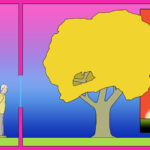The works listed below are contemporary examples of real and fictional individuals acknowledging feelings they have about what’s happened in their lives, examining beliefs they hold about themselves, and examining beliefs held about them by others.
In these works, the narrators first internalize the beliefs, then challenge and reject them, opening up perceptions of identity and possibility, and of novel choices and actions. Works are listed in each section in suggested reading order.
Non-fiction
Untamed, Glennon Doyle
Loving Bravely: Twenty Lessons of Self-Discovery to Help You Get the Love You Want, Alexandra Solomon, Ph.D.
Know My Name: A Memoir, Chanel Miller
- Tweet by Laura Norkin, Deputy Editor of InStyle, 10/10/19
- Interview with Chanel Miller for InStyle by Amelia Harnish, 10/10/19
- What Survivor Chanel Miller’s ‘Know My Name’ Means to Me, Diva Parekh, 10/3/19
- Interview with Trevor Noah, 10/14/19
Educated: A Memoir, Tara Westover
- Reading guide
- Discussion questions from New York Times
Becoming: A Memoir, Michelle Obama
Born a Crime: Stories from a South African Childhood, Trevor Noah
Let’s Pretend This Never Happened and Furiously Happy: A Funny Book About Horrible Things, Jenny Lawson
This Will Be My Undoing: Living at the Intersection of Black, Female, and Feminist in (White) America, Morgan Jerkins
- How America Fails Black Girls, New York Times op-ed by Morgan Jerkins
Rowing North: Navigating Life’s Currents and Flourishing as We Age, Mary Pipher, Ph.D.
- In this excerpt published in the New York Times, Pipher expresses the freedom that can result from “de-identifying” with others’ beliefs – including cruelly stigmatizing beliefs.
- Discussion questions for Rowing North
Almost Everything: Notes on Hope, Anne Lamott*
- Interview, New York Times
Fiction
The Book of Essie: A Novel, Meghan MacLean Weir
Daisy Jones & The Six, Taylor Jenkins Reid
Where the Crawdads Sing: A Novel, Delia Owens
My Ex-Life, Stephen McCauley
Less, Andrew Sean Greer
*An important caveat about Lamott’s book: Requiring people to “hit bottom” before receiving treatment for the medical illness of addiction is *not* an evidence-based treatment for addiction. Letting symptoms of any illness continue without treatment puts people at risk of dangerous complications, even premature death. Jail time, with its traumatizing and punishing deprivations, is *not* a treatment for addiction. For further reading on the false belief in “hitting bottom” – a very dangerous, misbegotten belief held by many – please consider reading this, this, and this.
[Dr. Sarah Wakeman] asks them to imagine telling a diabetic she has to “hit bottom” before she can have her insulin. Or telling a cancer patient he has to drive to a clinic 150 miles away to get his daily dose of chemotherapy. Or telling a patient with heart disease to use her will to heal her heart. Or handing someone who’s had a heart attack a list of cardiologists and wishing them good luck. “They often say, ‘I’ve never thought of that before—that would be malpractice!’” she says. “And yet that’s how we routinely treat people who come into the hospital with some sort of complication related to addiction.”
– from Sarah Baldwin, “Vocal Advocate,” Medicine@Brown, 2/8/19
On addressing deeply held beliefs
At the national level:
- America Is Trapped in a Pandemic Spiral, Ed Yong, The Atlantic, 9/13/20
At the human level:
- Sapiens: A History of Humankind, Yuval Noah Harari, 2017
Last revised 10/19/20

